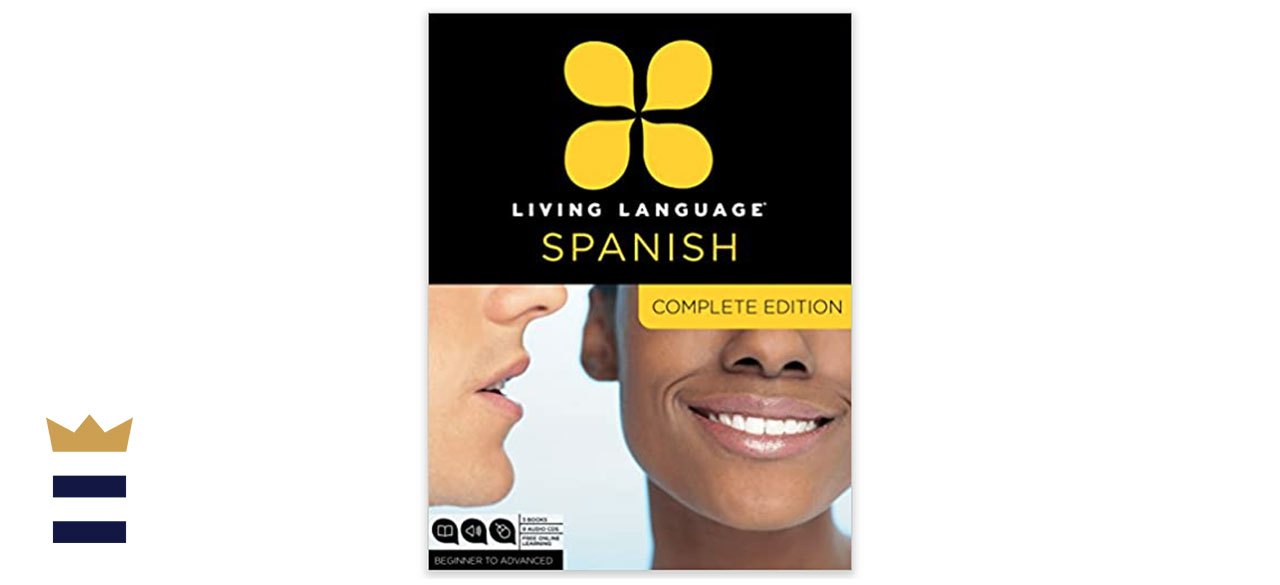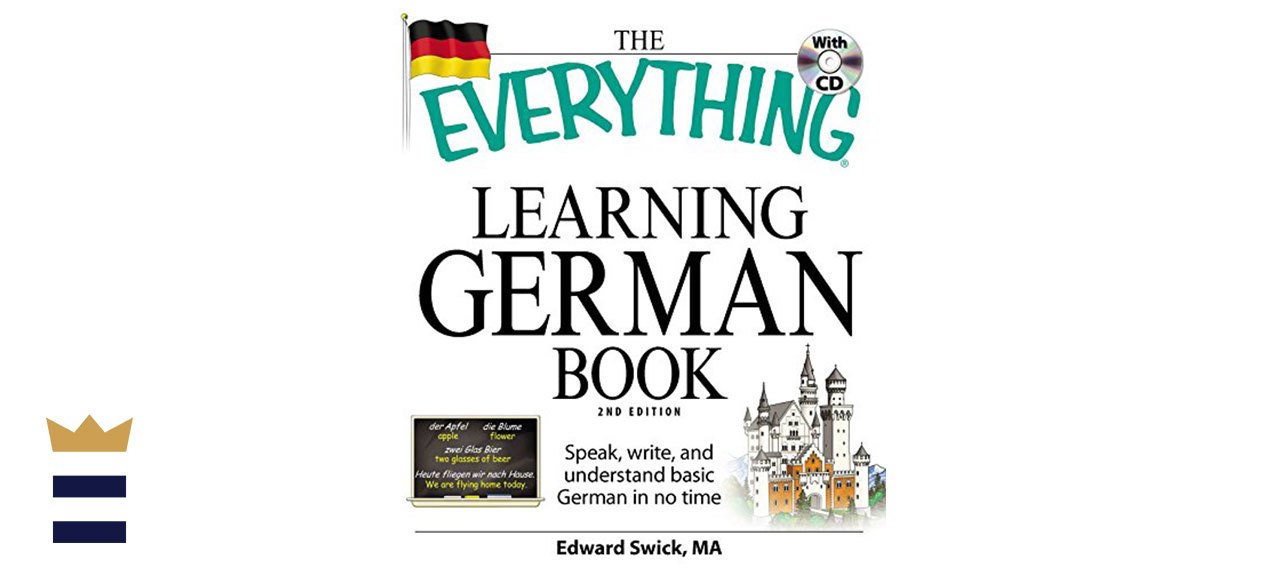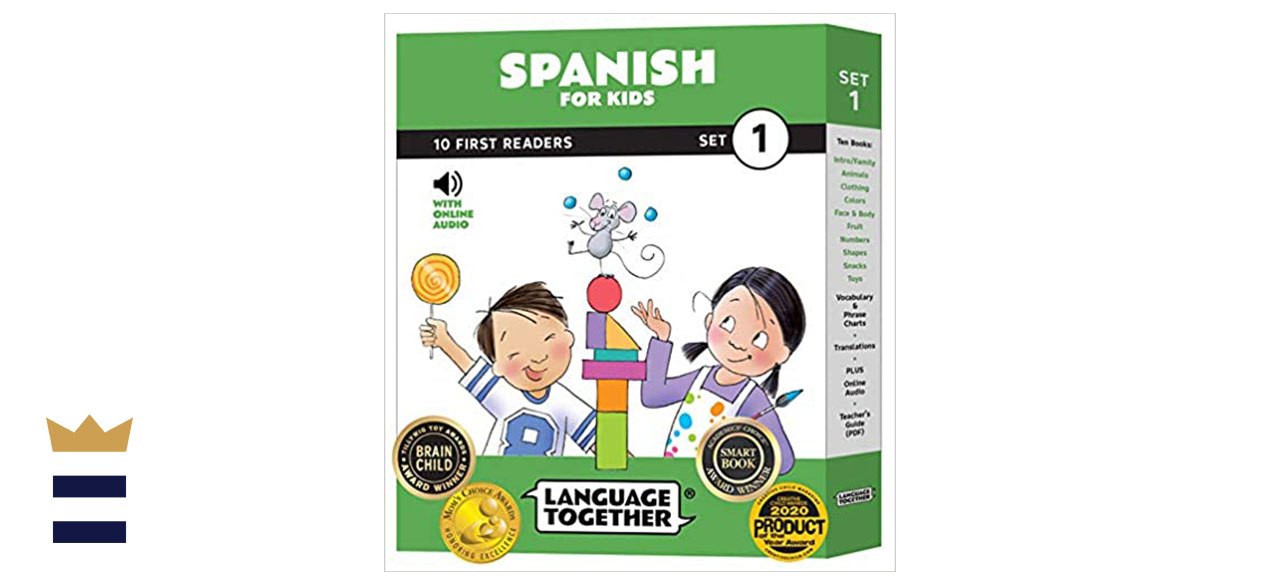Which foreign language tools are best?
If your children have begun learning a foreign language in school, it’s a good idea to help them develop their fluency with supplemental materials.
While there’s a lot to be said for learning a language in a classroom, foreign language materials allow kids or adults to enjoy a self-paced study. Sets can contain interactive media like audio CDs and access to online platforms, as well as textbooks and workbooks. Some foreign language materials even connect you with native speakers for conversation practice.
With so many foreign language materials on the market, you’re probably wondering which one is best for you or your kids. To help narrow your choices, we’ve assembled this buying guide with an overview of popular features to examine. Our favorite set, Living Language Spanish, takes a four-point approach to language acquisition, so you can communicate clearly.
What to know before you buy foreign language learning tools
Choosing materials by age vs. by level
Foreign language materials geared toward school-aged children are usually categorized by age group or grade. The curriculum is written at their reading level in English, and lessons are designed to pose reasonable challenges to promote breakthrough learning in the foreign language.
Foreign language materials designed for older kids and adults tend to be categorized by fluency level, which is either beginner, intermediate, or advanced. These levels can be a bit fluid and subjective, so do your research to find an appropriate level for you.
Focus
When it comes to foreign language materials, each set leads with a different focus. This can be conversation, composition, vocabulary building, or grammar mastery. Travelers gravitate toward conversation-driven materials for practical reasons, while parents may choose vocabulary-driven sets for younger kids in the early stages of foreign language learning.
Format
Textbooks and workbooks prevail as the most common formats for foreign language materials. They serve as foundational materials in comprehensive language programs which may include other formats like audio CDs, interactive platforms, or manipulatives. Conversation-driven formats are also popular, where learners have the opportunity to engage in live chats with native speakers.
What to look for in quality foreign language learning tools
Images and illustrations
It’s common to see images and illustrations in foreign language textbooks and workbooks. Generally speaking, the older the intended age group of the materials, the fewer images are included.
Pronunciation
A key aspect of foreign language mastery is pronunciation, and foreign language materials approach this in a number of ways. Vocabulary banks have phonetic representations of words. Audio-driven formats utilize reinforcement, in which learners hear a native speaker and repeat the word or phrase. This helps learners understand and identify inflections, stress, and differences in dialect.
Contextual information
Some foreign language materials have a contextual approach to learning. These materials contain information about culture, geography, cuisines, history, and literary excerpts. While this trend is more common in materials geared toward school-aged learners, several conversation-driven materials for adults also contain contextual information.
How much you can expect to spend on foreign language learning tools
Foreign language textbooks, workbooks, and CDs can be found at $20 or less. Sets that are bundled with several types of foreign language materials cost closer to $60. Comprehensive language programs cost $150-$200.
Foreign language learning tools FAQ
How do I know my kids have outgrown their foreign language materials?
A. A key indicator is when kids are no longer challenged by harder lessons. When that happens, it’s best to graduate to a set that can provide new challenges that focus on the intricacies of advanced verb conjugation and complex vocabulary.
Does the copyright date matter with foreign language materials?
A. Not really, unless you want to buy the most current set available. However, newer editions of materials often contain relevant curriculum and vocabulary which may be more useful in conversation, both in practice environments and when traveling abroad.
What are the best foreign language learning tools to buy?
Top foreign language learning tool
Our take: Best option for structured, standardized foreign language learning.
What we like: Vocabulary foundation helps prep for conversation. Utilizes short- and long-term memory techniques.
What we dislike: Formal and fast-paced, so it’s better for intermediate learners.
Where to buy: Sold by Amazon
Top foreign language learning tool for the money
The Everything Learning German Book
Our take: Direct learning approach for travelers who need a focused and affordable study of German.
What we like: Grammar- and sentence-oriented. Audio CD follows the book seamlessly.
What we dislike: Mixed reviews on pronunciation and phonetic spellings.
Where to buy: Sold by Amazon
Worth checking out
Spanish for Kids: 10 First Reader Books and Audio Set
Our take: Earns high marks for kid-friendly approach and interactive materials.
What we like: Comes with texts and online platform access. Image-driven lessons.
What we dislike: A bit steep in price for a small paperback collection.
Where to buy: Sold by Amazon
Sign up here to receive the BestReviews weekly newsletter for useful advice on new products and noteworthy deals.
Sian Babish writes for BestReviews. BestReviews has helped millions of consumers simplify their purchasing decisions, saving them time and money.
Copyright 2021 BestReviews, a Nexstar company. All rights reserved.




